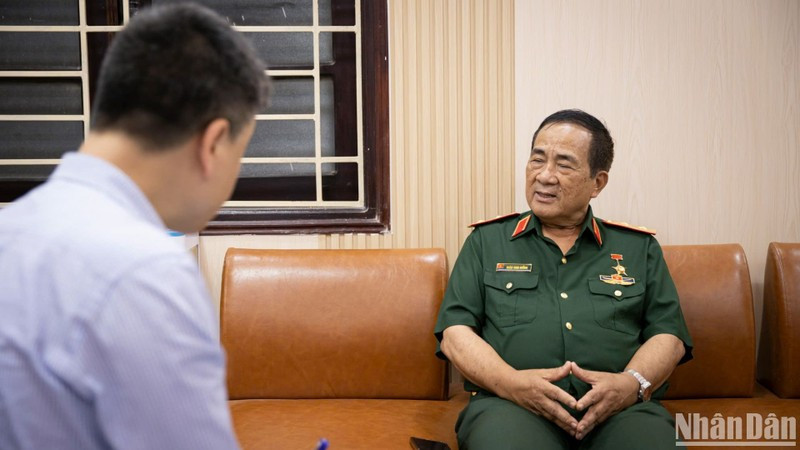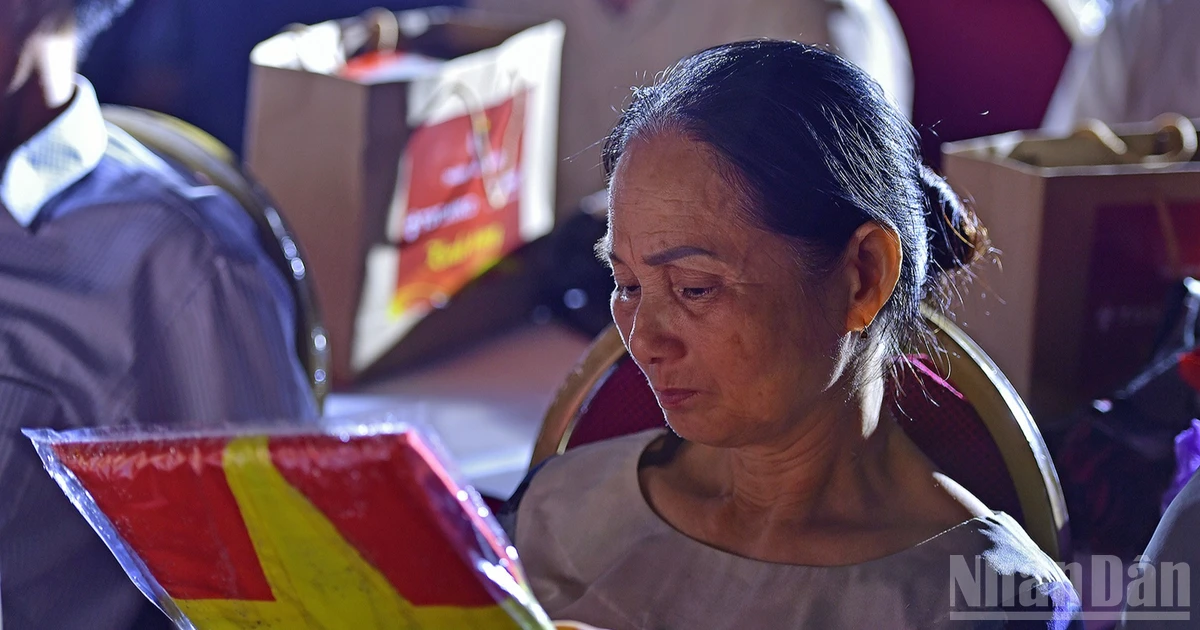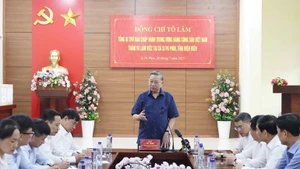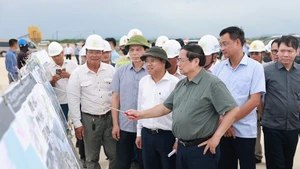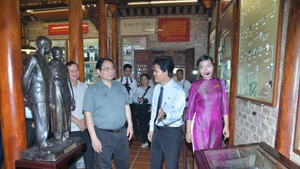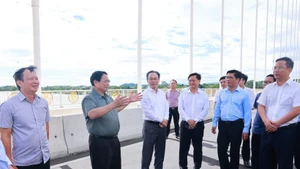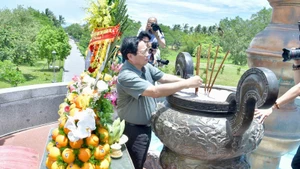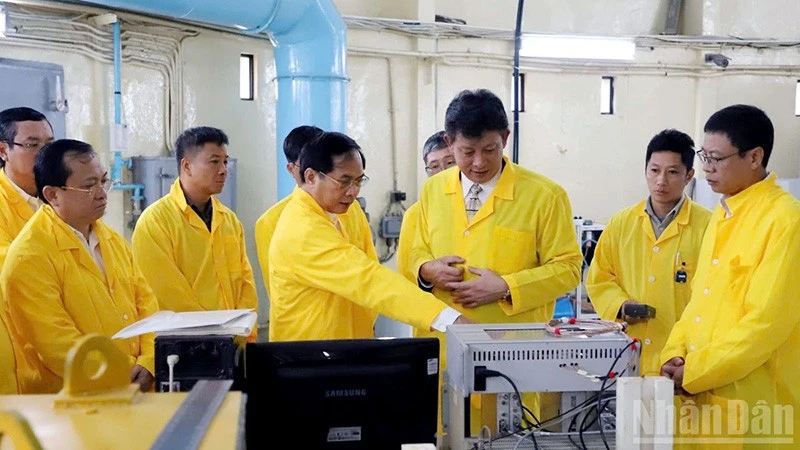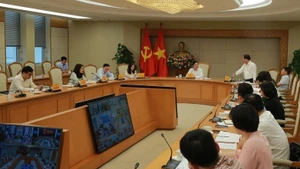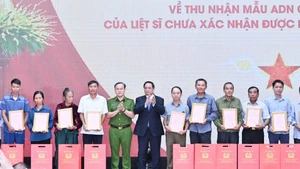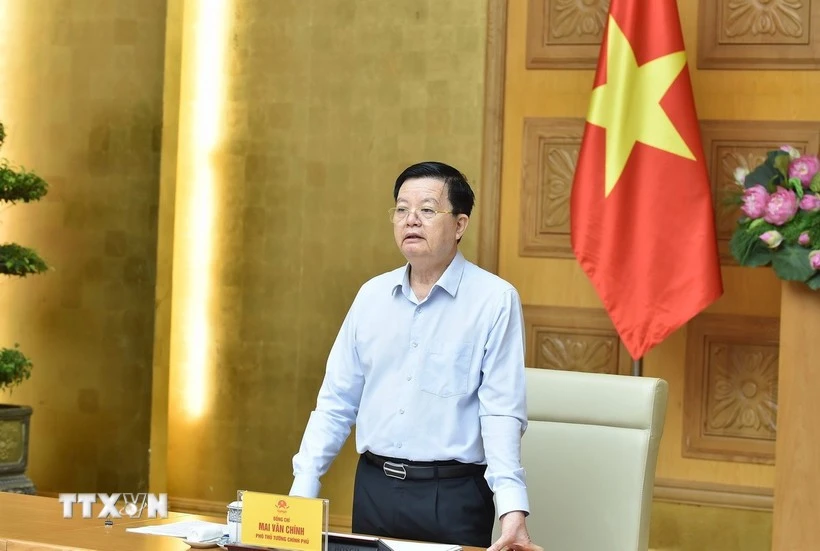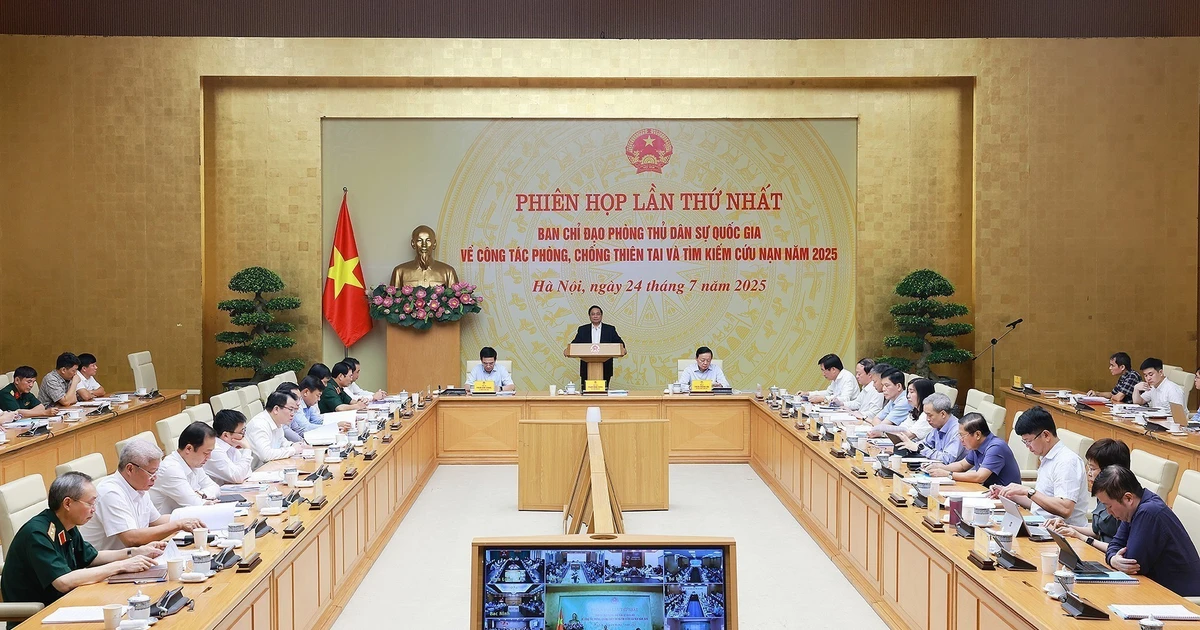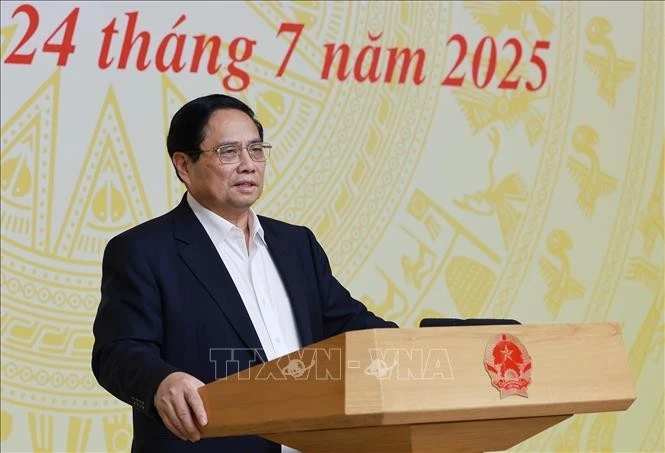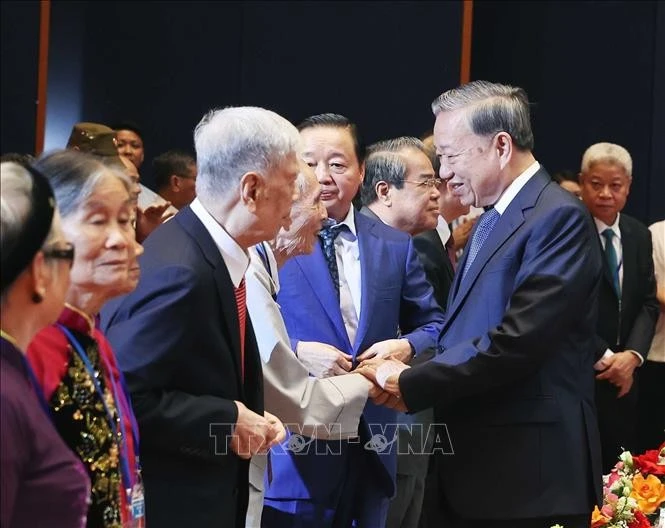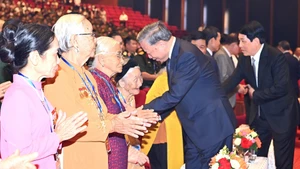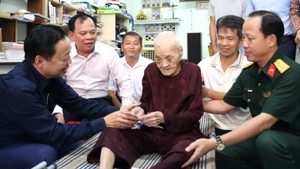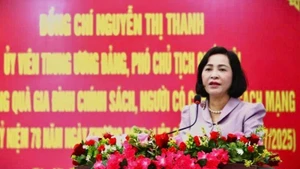The resolve, courage, and intelligence of the Vietnamese people were vividly demonstrated through the intense war stories and the unique military strategies employed throughout the long resistance against the Americans, for the salvation of the nation, the liberation of the South, and the reunification of the country.
“The most beautiful life is on the battlefield against the enemy”
In the early 1970s, when the war for national salvation entered its fiercest and most decisive phase, young people across the country, driven by an intense patriotism, enthusiastically headed for the frontlines without fear.
Associate Professor Dr Ha Minh Hong, Vice President of the Ho Chi Minh City Association of Historical Sciences, who once served as a reconnaissance soldier on the B3 front, shared: “During the years of resistance, the spirit of the entire nation, especially among students and young people, was ever-ready to fight and defend the homeland.” At the end of 1971, the young Ha Minh Hong from Hanoi, having just graduated from grade 10 and awaiting university entrance exam results, heeded the call of the homeland, quickly gathered his belongings and set off with his peers. The heroic spirit of youth overcame any fear of battle, and they held the firm belief that “the most beautiful life is on the battlefield against the enemy.”
That same spirit of youth also spurred Major General Lo Khac Tam, former Leader of Squad 3, Company 2, Battalion 7, Regiment 66, to the battlefield. Marching through bombs and bullets from 1965 until liberation, the general’s youth was spent continuously advancing southward, with the most unforgettable memory being the victory at Ia Drang during the Plei Me Campaign.
He recounted: “In November 1965, fearing the failure of its “special warfare” strategy, the United States quickly escalated to local war by deploying the 1st Air Cavalry Division directly into combat. Their goal was to annihilate all liberation forces in the South, especially in the Central Highlands battlefiled, within 18 months, making the battlefield extremely fierce.”
Accurately predicting this move, our forces launched the Plei Me Campaign, identifying the Ia Drang Valley (Gia Lai Province) as a critical battleground. “On the night of November 14 and early morning of November 15, 1965, our Battalion 7 was ordered to attack alongside Battalion 9. By the evening of November 15, the enemy was forced to retreat. On November 16, the 1st Battalion of the enemy was nearly wiped out. Meanwhile, the enemy’s 2nd Battalion, sent in for reinforcements, was completely destroyed by Battalion 8 (Regiment 66). Ia Drang Valley was a resounding victory,” Major General Lo Khac Tam recalled.
This overwhelming victory at Ia Drang further strengthened the belief that Vietnam could defeat even the world’s leading military power through people’s war.
The epic stories of fearless soldiers were even more deeply engraved in national memory through the Battle of Quang Tri Citadel in 1972. Today, in Hanoi, journalist Phung Huy Thinh, a former student-soldier who once volunteered for the Quang Tri front, sits quietly by his small desk, writing about his comrade Le Xuan Dinh – Hero of the People’s Armed Forces.
The story of the martyr who sacrificed himself to save his comrades from enemy capture will be shared by Thinh during a ceremony at the end of this April, the event organised by 500 former student-soldiers of the Quang Tri Citadel, to honour and remember those who laid down their lives for the country.
“Le Xuan Dinh and so many other martyrs always live in our hearts. Amidst the brutality of the frontlines, soldiers fought to protect their homeland, their families, and their comrades standing shoulder to shoulder,” Phung Huy Thinh tearfully recalled. “Comrades were family” – the veteran cannot forget the haunting memory of a mealtime in the trenches, when six soldiers sat together, a bomb struck, and only one survived... He also wept inconsolably when he buried his comrades. “What's even more painful is that every time I return, I see that the remaining graves are all buried in bomb craters,” he remembered.
The harsh reality on the battlefield at the end of 1972 made the US imperialists decide to use B-52 bombers to destroy Hanoi, Hai Phong and many other localities to put final pressure on the Paris Agreement negotiation table.
Lieutenant General and Hero Nguyen Duc Soat, former Commander of the Air Defence–Air Force Service and former Deputy Chief of the General Staff of the Vietnam People’s Army, recounted: By late 1967, during meetings with the Air Defence–Air Force Command, President Ho Chi Minh believed that sooner or later, the US would bring B-52s to bomb Hanoi, and stressed the need to prepare for every possible scenario as early as possible.
 |
| Lieutenant General and Hero Nguyen Duc Soat, former Commander of the Air Defence–Air Force Service and former Deputy Chief of the General Staff of the Vietnam People’s Army, shared his reflections on the victory of “Dien Bien Phu in the Air”. (Photo: THE DAI) |
The greatest difficulty in Hanoi and Hai Phong’s skies at that time was the powerful jamming capability of the enemy, supported by advanced EB66 and EC121 aircraft. Yet, through the experience of the air force and air defence forces, our troops gradually learned how to analyse and effectively counter B-52 electronic jamming.
On the night of December 18, 1972, the first night of the campaign, our forces shot down three B-52s, severely damaging two more. After 12 days and nights, we had shot down 81 aircraft, including 34 B-52 bombers and five F-111 attack aircraft, and captured 43 American pilots. This unprecedented loss for the US air force compelled President Richard Nixon to halt the bombing and return to the negotiation table in Paris – a victory that shook the world.
Journalist Ha Dang vividly recalled his memories of being sent to attend the Paris Conference in late 1968 as a member of the delegation from the National Liberation Front of South Vietnam, and later, the Provisional Revolutionary Government of the Republic of South Vietnam. At the time, he was Deputy Head of the Southern Affairs Department of Nhan Dan Newspaper. During the conference, he was assigned to edit the speeches of the Head of the Vietnamese delegation.
Over the five years of the Paris Conference, he witnessed countless intense battles of wit. The resounding victories on the battlefield had a decisive impact on the negotiating table.
These included the achievements of the 81-day defence of Quang Tri Citadel and the “Dien Bien Phu in the Air” victory, where Vietnam decisively defeated the brutal US strategic air raid with B-52 bombers over Hanoi, Hai Phong, and elsewhere at the end of 1972.
These triumphs forced the US to sit down at the negotiating table. The Paris Peace Accords, signed on January 27, 1973, compelled the US to recognise the fundamental national rights of the Vietnamese people, to accept the unconditional withdrawal of all US troops, and to leave the issue of South Vietnam to be decided by its own people.
 |
| The Paris Peace Conference, aimed at ending the war and restoring peace in Vietnam, took place from 1968 to 1973, becoming one of the longest peace negotiations of the 20th century. (File Photo) |
Witnessing the signing ceremony, all members of the two Vietnamese delegations were deeply moved. The longest peace negotiations of the 20th century ended with victory belonging to the Vietnamese people.
General offensive
Lieutenant General Doan Sinh Huong, Hero of the People’s Armed Forces, former Commander of the Armoured Corps and former Commander of Military Region 4, enthusiastically recalled the decisive battle that launched the Central Highlands Campaign: “During the battle of Buon Ma Thuot, which opened the Central Highlands Campaign in 1975, I served as the Commander of Tank Company 9, Brigade 273 of Army Corps 3, directly commanding tank number 980 leading the formation of tanks and infantry from Battalion 4 to strike straight into the central area of Buon Ma Thuot town.
To prepare for this battle, we spent three to four months deciding. The Commander of the Central Highlands Campaign chose Buon Ma Thuot as the opening point on March 10, 1975. Our mission was to launch a direct assault on the Command Centre of the enemy’s 23rd Division, located at the heart of the town, to maximise the element of surprise and leave the enemy unable to react. The southern wing of the 2nd Army Corps of the Saigon regime quickly collapsed. In the following days, on March 11 and 13, the enemy lanched counterattacks in an attempt to recapture Buon Ma Thuot but were defeated.”
The victory of Buon Ma Thuot opened the door for our army to quickly liberate the Central Highlands, at the same time deploying forces to liberate the South-Central provinces, creating a breakthrough on the battlefield to carry out the campaign to liberate Hue, Da Nang and finally the historic Ho Chi Minh Campaign.
The Ho Chi Minh Campaign, under the spirit of being “swift, daring, unexpected, and certain to win”, with tactics of “deep penetration, destruction”, combined with “offensive marches”, utterly dismantled the entire defence system of the Saigon army and government. At exactly 11:30 am on April 30, 1975, the revolutionary flag flew atop the roof of the Independence Palace, marking the end of the 21-year-long resistance against the Americans for national salvation.
According to Colonel, Associate Professor, and Doctor Nguyen Van Sau, Deputy Director of the Institute of Strategy and History of the National Defense of Vietnam, fifty years have passed since the end of the war; the country has achieved independence, reunification, and confidently advances on the path towards socialism. Yet, the history of the struggle and resounding victories of the Vietnamese military and people during the thirty years of national liberation wars (1945–1975) remains a shining symbol of the total triumph of revolutionary heroism and the extraordinary intelligence of the Vietnamese people. From that bloody and tearful epic of national liberation, immortal monuments of selfless sacrifice still stand as beacons lighting the way for a future of peace and freedom.
